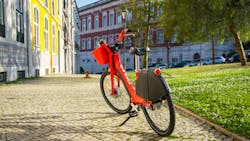Key takeaways:
- Global electrification efforts are evident in countries like Kenya, which is achieving nearly 100% renewable energy in its grid and has a significant rise in electric motorbike use.
- The electric motorbike delivery model in Kenya is similar to the owner-operator structure in trucking, providing valuable lessons for the industry.
- The rapid adoption of electrification across various vehicles offers insights that can help the trucking sector improve sustainability and reduce operational costs.
You would be surprised at where a career in the trucking industry can take you. I recently returned from a trip to Nairobi, Kenya, where I was part of the Drive Electric Campaign meeting. Five years ago, I was honored to be asked to be part of this effort, which is trying “to accelerate the global transition to a clean transportation future.”
Over the past five years, the group has met in Scotland, Norway, Costa Rica, and Los Angeles. A side note: It was at these meetings that I learned that 90% of new passenger cars in Norway are fully electric.
While this group may have a more singular focus than NACFE, its goals align with our efforts to “help fleets save money and reduce emissions.” So, I am happy to have been asked to join.
Being part of this group has shown me that some countries, even so-called less developed ones, are aggressively working to reduce emissions. As their economies and cities grow, they are trying to stay ahead of air quality issues that have plagued other, more mature cities in the past. In essence, they are trying to stop smog from developing and getting out of control.
While in Kenya, one of the things I learned was that the current share of renewable energy powering its national grid is nearly 100%. In addition, electric motorbikes are a popular mode of transportation and goods movement. As we moved throughout the city, these bikes were everywhere, making up about a third of all vehicles on the road. The share of electric motorbikes has increased sevenfold over two years, with electric motorbikes being both cheaper to buy and cheaper and easier to operate.
See also: Roeth: Sharing stories
And many of these motorbikes are not just for personal use. It is not unusual at all to see electric motorbikes with boxes on the back being used to deliver goods. The folks making these deliveries are referred to as owner-operators, and it seems to me their business model is not too far removed from our own owner-operator business model in trucking.
I understand that motorbikes are not Class 8 trucks, but the group is working on everything from bicycles and three-wheelers to motorcycles, passenger cars, buses, and heavy-duty trucks.
I think the key takeaway for me was that many countries are moving forward with the electrification of all types of vehicles and doing so quickly. Maybe we can all learn some lessons from these other use cases where electrification has proven to work from both an initial purchase price and operational cost standpoint.
It’s interesting to me that a country that many of us would not expect to be at the forefront of new technology is moving very rapidly toward a greener future. It’s something to think about … and to learn from.
About the Author

Michael Roeth
Executive Director
Michael Roeth is the executive director of the North American Council for Freight Efficiency. He serves on the second National Academy of Sciences Committee on Technologies and Approaches for Reducing the Fuel Consumption of Medium and Heavy-Duty Vehicles and has held various positions with Navistar and Behr/Cummins.
